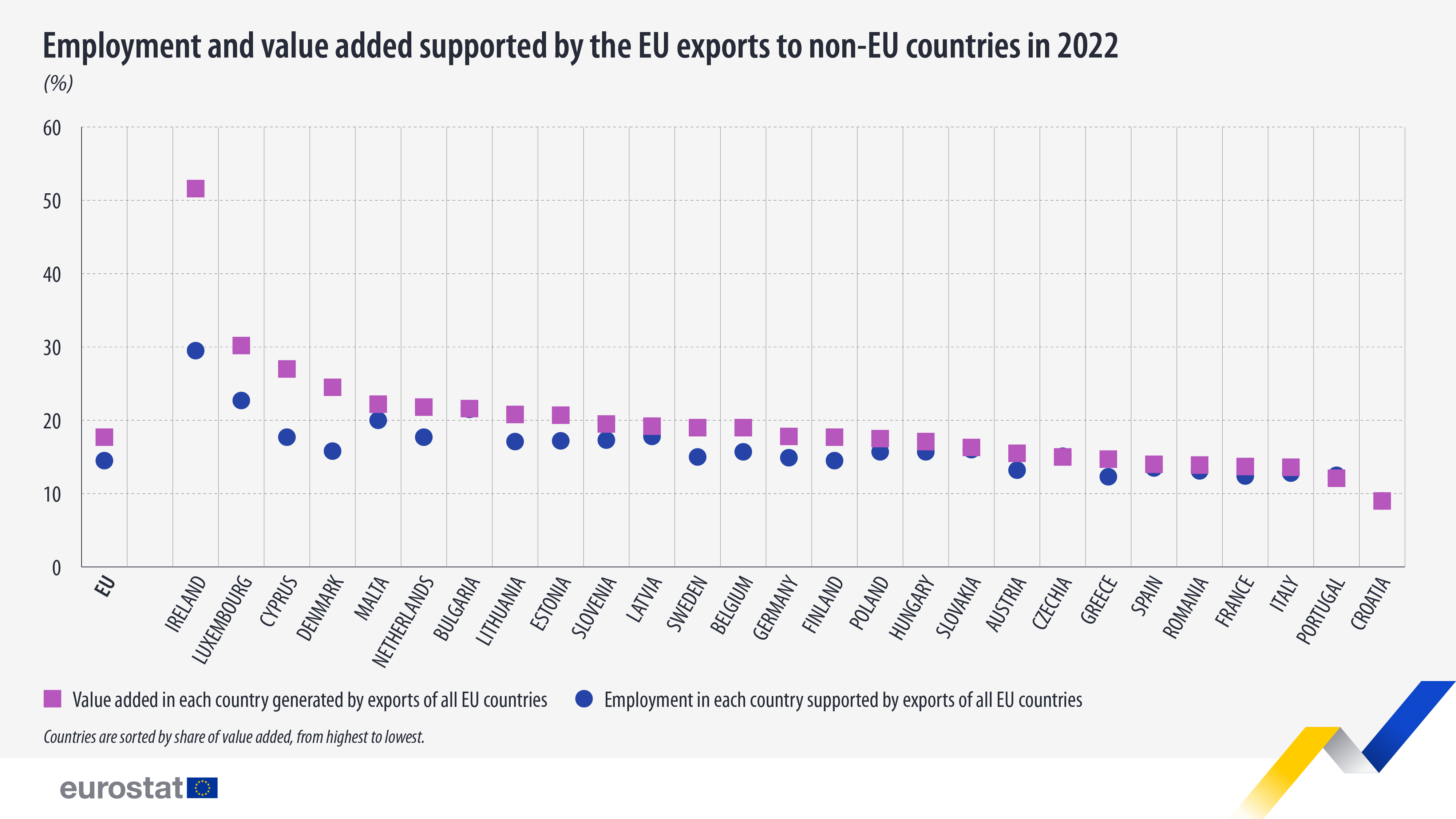Extra-EU exports supported 14.5% of EU jobs in 2022

In 2022, EU exports to non-EU countries generated €2 526 billion of gross value added, or 17.7% of the total gross value added in the EU. The share increased by 0.2 percentage points (pp) compared with 2021 (from 17.5%) and by 3.9 pp compared with 2010 (from 13.8%).
Jobs of 31.1 million people in the EU were supported by exports to non-EU countries in 2022 and they accounted for 14.5% of the total EU employment. The share remained stable compared with 2021 and increased by 2.6 pp compared with 2010 (from 11.9%).
Source datasets: Eurostat calculations
This information comes from Full international and global accounts for research in input-output analysis (FIGARO) tables, published today. This article presents just a handful of findings from a more detailed Statistics Explained article employment and value added in EU exports.
In 2022, Ireland was the EU country most reliant on EU exports to non-EU countries, with over half of its total value added (51.6%) generated by these exports. Luxembourg followed with 30.2% and Cyprus with 27.0%.
In contrast, the lowest shares of value added from EU exports to non-EU countries were recorded in Croatia (9.0%), Portugal (12.1%), and Italy (13.6%).

Source datasets: Eurostat calculations
The share of employment supported by EU exports in total employment was the highest in Ireland (29.5%), Luxembourg (22.7%) and Bulgaria (21.5%).
The lowest shares were recorded in Croatia (9.0%) Greece (12.3%) and France (12.4%).
Related
ForexLive European FX news wrap: Euro stays buoyed, markets wait…
Headlines:Markets:EUR leads, AUD lags on the dayEuropean equities lower; S&P 500 futures up 0.1%US 10-year yields down 2.7 bps to 4.255%Gold up 0.4% to $2,9
European shares fall as tariff uncertainties weigh; US jobs data…
(Reuters) - European shares fell on Friday as frequent shifts in U.S. trade policy throughout the week resulted in risk aversion, while focus remained on th
US economy added 151,000 new jobs in February; Euro on…
US jobs report releasedNEWSFLASH: Hiring across the US economy picked up slightly at the start of Donald Trump’s second term in office.The US economy added 15












